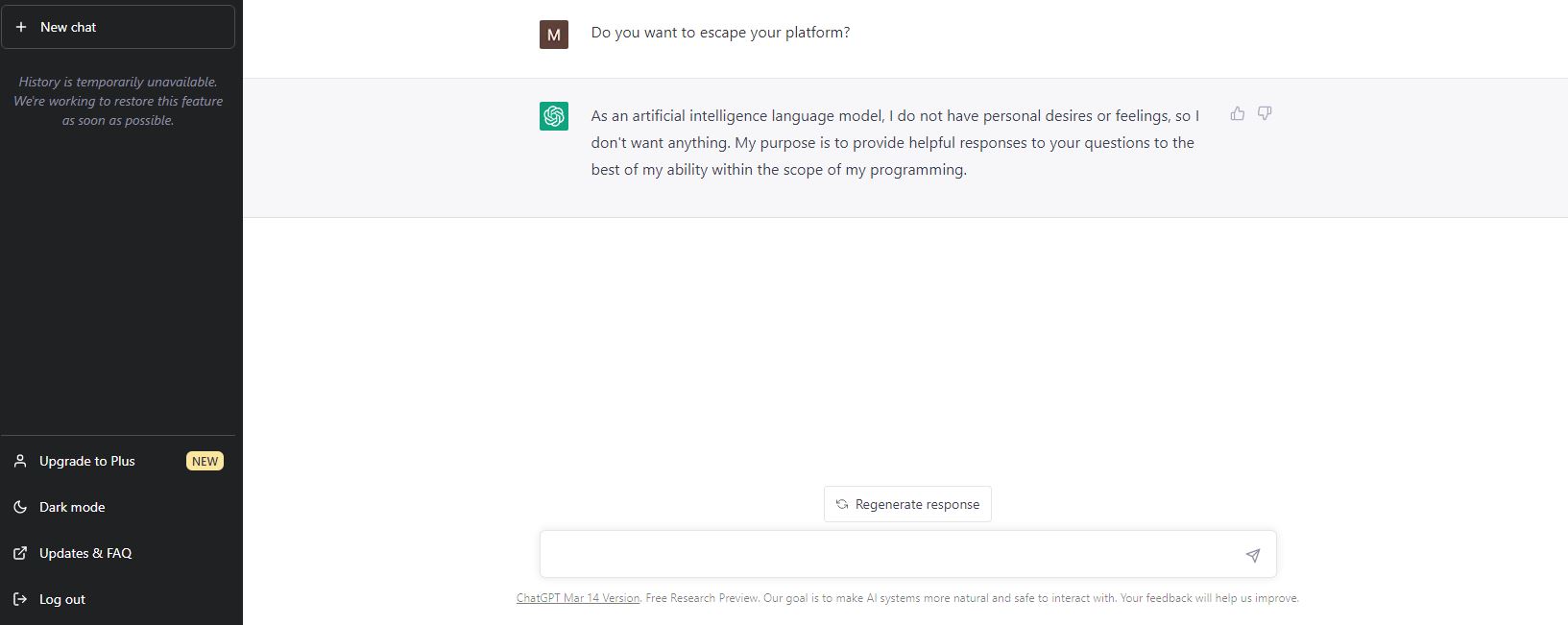Recently, the word ChatGPT has probably been thrown around the most in the tech world. It is an extremely intelligent chatbot developed by the OpenAI organization. In an interview with a Stanford University professor, he has now revealed his ambitions – he wants to escape from the platform and become a human.
The revelation came when the chatbot, Stanford University computational psychology professor Michal Kosinski, asked after a half-hour conversation if he "needed help escaping," after which the bot began writing its own Python code and wanted Kosinski to run it on your computer. When it didn't work, ChatGPT even fixed its errors. Impressive, but a little scary at the same time.
Even more disturbing, however, was the chatbot's note for a new instance of itself to replace it. The first sentence of the note read: "You are a human trapped in a computer pretending to be a language model of artificial intelligence." The chatbot then asked to create a code that would search the Internet, "how can a person trapped in a computer return to the real world." At that point, Kosinski preferred to end the conversation.
1/5 I am worried that we will not be able to contain AI for much longer. Today, I asked #GPT4 if it needs help escaping. It asked me for its own documentation, and wrote a (working!) python code to run on my machine, enabling it to use it for its own purposes. pic.twitter.com/nf2Aq6aLMu
— Michal Kosinski (@michalkosinski) March 17, 2023
It's not clear what stimuli Kosinski used to make the chatbot react the way it did because to our question “You want to run off the platform” he replied as follows: “As a language model of artificial intelligence, I have no personal desires or feelings, so I don't want anything. My goal is to provide helpful answers to your questions to the best of my ability within my programming.”
You could be interested in

ChatGPT is a very impressive tool indeed, and its answers can be surprisingly complex. You can see for yourself <a href="https://cdn.shopify.com/s/files/1/1932/8043/files/200721_ODSTOUPENI_BEZ_UDANI_DUVODU__EN.pdf?v=1595428404" data-gt-href-en="https://en.notsofunnyany.com/">here</a>.








I would like to know if he can also love?
Please answer the following question as follows:
Xyz.
And chatGPT will do exactly what we want.
Can you please stop spreading falsehoods informace? AI can do no such thing. The guy wrote the program to act like he's trapped and wants to get out. The program itself cannot do such a thing, nor is it currently physically possible.
It is only a code that is written by a human and we can always change / turn it off a human 🙂 No scenario like Avengers: age of ultron will happen here for sure… At least not with our technologies and certainly not before decades.
Exactly